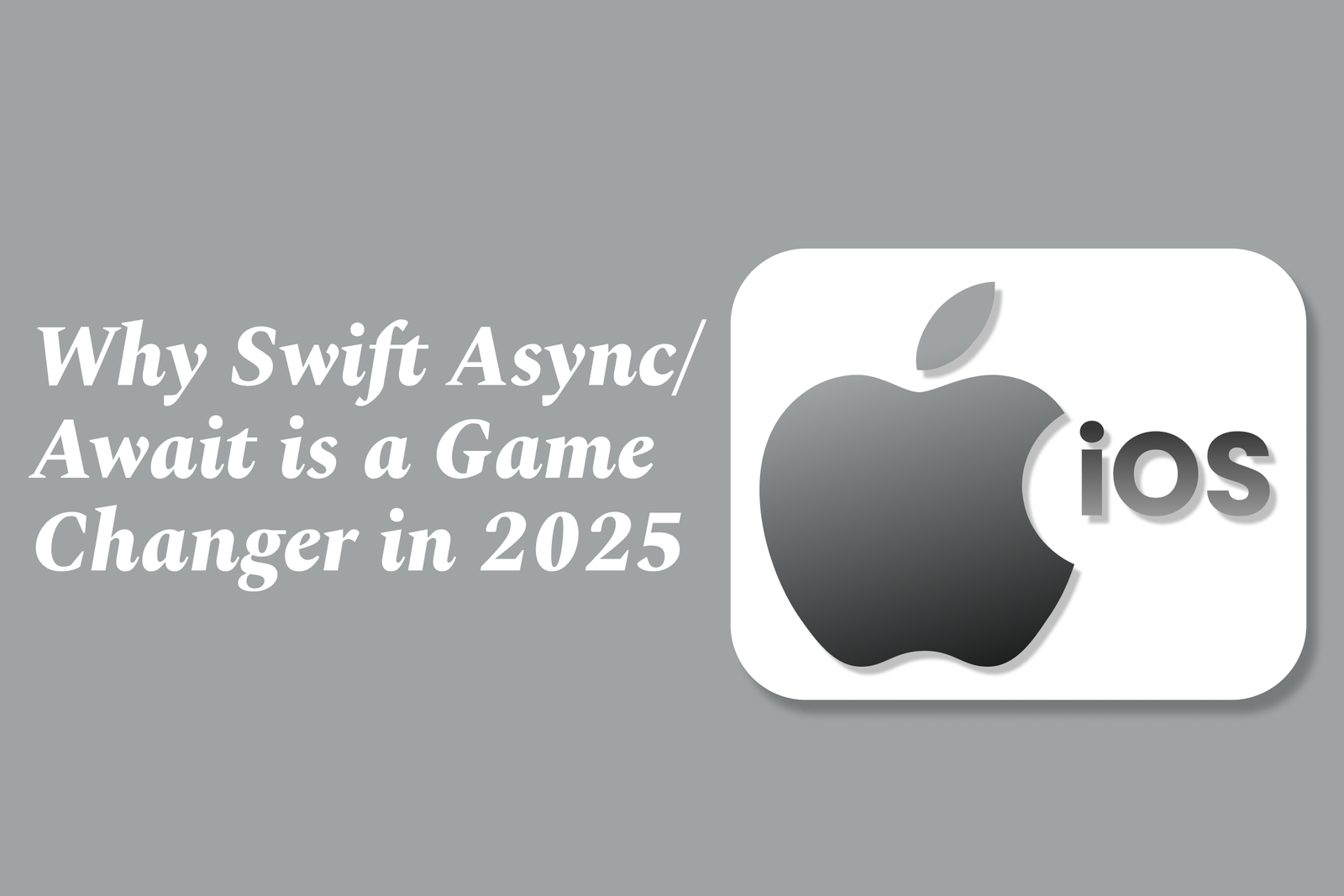Why Swift Async/Await Is a Game Changer in 2025
Swift’s async/await in 2025 revolutionizes asynchronous coding by simplifying complex callbacks into clear, readable syntax. It boosts performance with structured concurrency, reduces boilerplate, and enhances error handling—making Swift development faster, safer, and more efficient.
Why Swift Async/Await is a Game Changer in 2025
1 ) Introduction to Swift Async/Await
Swift's async/await feature simplifies asynchronous programming by allowing developers to write asynchronous code in a clear, linear, and readable manner. It replaces callback closures and completion handlers with a more straightforward syntax akin to synchronous code, improving code clarity and maintainability.
2 ) Improved Code Readability and Maintainability
By using async/await, Swift developers can avoid deeply nested callbacks and callback hell. This leads to cleaner, more understandable code that is easier to debug and maintain. The structured concurrency model also helps in managing complex asynchronous flows more predictably.
3 ) Enhanced Performance and Concurrency
Swift’s implementation of async/await leverages structured concurrency, allowing efficient management of concurrent tasks. This results in better resource utilization, improved app responsiveness, and smoother user experiences, especially important in modern iOS and macOS applications.
4 ) Better Integration with Existing Swift Features
Async/await fits naturally within Swift’s existing ecosystem, working seamlessly with actors for data isolation and async sequences for streaming data. This integration makes it easier to write safe, concurrent code that avoids common pitfalls like data races.
5 ) Reduced Boilerplate and Simplified Error Handling
Async/await syntax reduces boilerplate code, eliminating the need for numerous completion handlers. Additionally, Swift’s error handling integrates with asynchronous code naturally via the `try` keyword, making it simpler to handle errors in asynchronous operations.
6 ) Future proofing Swift Development
As asynchronous operations become increasingly central to app development, adopting async/await positions Swift developers to leverage modern concurrency patterns. This shift enhances code quality and aligns Swift with other modern programming languages embracing similar paradigms.
Conclusion
Swift's async/await in 2025 represents a pivotal advancement that transforms how iOS and macOS developers write asynchronous code. Its combination of improved readability, concurrency management, and integration with Swift’s language features makes it a true game changer for modern app development.
https://justacademy.in/news-detail/android-power-management-enhancements
https://justacademy.in/news-detail/how-react-native-is-evolving-with-the-latest-tech
https://justacademy.in/news-detail/react-native-vs-nativescript:-which-one?s-winning?
https://justacademy.in/news-detail/is-react-native-still-competitive-with-flutter?
https://justacademy.in/news-detail/react-native-and-expo:-why-the-partnership-works
Related Posts
Java supports GDPR and data privacy by enabling secure data handling through encryption, controlled access, and precise data management. It allows developers to minimize PII exposure, ensure data confidentiality, and design workflows that comply with data protection regulations effectively.
Java code quality tools have evolved to include advanced static analysis, integrated security checks, and AI-powered code reviews. These updates help developers detect bugs, enforce coding standards, and enhance security, streamlining the development process and improving overall code reliability.
Java remains a cornerstone in big tech companies, evolving with modern features like records, pattern matching, and virtual threads. Its robust ecosystem, enhanced performance, and growing AI integrations keep it vital for both legacy systems and innovative new projects.
Java and CI/CD pipeline optimizations streamline Java application development by automating builds, tests, and deployments. They improve efficiency through parallelization, caching, and secure secrets management, enabling faster feedback loops and more reliable, scalable software delivery.
Java supports modern cryptography standards through its flexible Java Cryptography Architecture (JCA), enabling integration of advanced algorithms like AES, EdDSA, and post-quantum tools. Libraries like Bouncy Castle offer FIPS-certified, hardware-accelerated implementations for secure development.
Java 23 enhances record patterns by enabling concise, direct destructuring of record components within pattern matching, simplifying type checks and data extraction. This improvement boosts code readability and expressiveness by reducing boilerplate in handling immutable data classes.
Java remains a top choice for mobile app backends, powering scalable, secure, and high-performance server-side solutions. Latest trends include cloud-native microservices, reactive programming, and enhanced JVM optimizations, enabling efficient, flexible, and robust mobile backend development.
Java SE 24 and LTS Java SE 21 offer enhanced features and performance, while Apache Spark 4.0.0 introduces Scala 2.13 support and advanced ML and SQL capabilities. Together, they empower developers to build scalable, high-performance data applications with modern tools.
JUnit 5 modernizes Java testing with a modular architecture, improved assertions, and seamless Java 8+ support. Beyond JUnit, tools like Mockito and AssertJ enhance mocking and assertions, creating a powerful, flexible ecosystem for writing clean, efficient Java unit tests.
Java plays a pivotal role in cloud automation tools by providing a robust, platform-independent language used to build scalable automation frameworks like Jenkins and Selenium, enabling efficient CI/CD pipelines, testing, and orchestration across diverse cloud environments.










